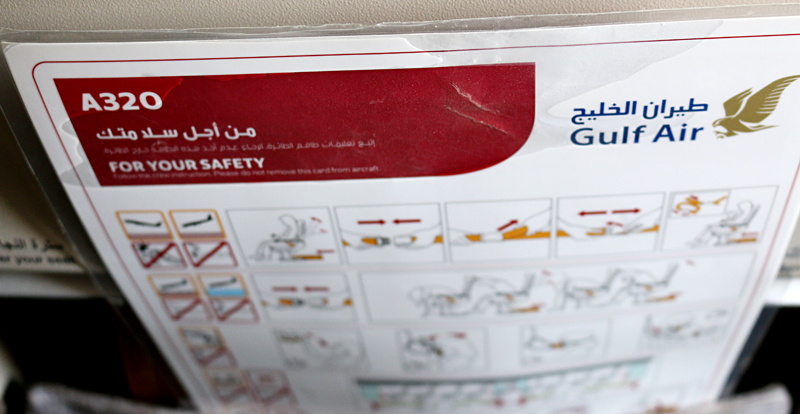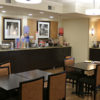D espite the fact that I might know significantly more about the roles of a flight attendant than a typical passenger aboard an airplane — largely in part due to being a participant in something offered by Delta Air Lines known as Road Warrior training — there are many things about which I do not know.
Sarah Steegar — who was a colleague of mine when The Gate resided at FlyerTalk for the second time — writes a column which appears roughly every Tuesday called Crewed Talk. I tend to read it on a quasi-regular basis; and she wrote this excellent article containing five seemingly silly reasons for why your flight is delayed or canceled.
Five Seemingly Silly Reasons For Why Your Flight is Delayed or Canceled
“We’re delayed for what? You’ve got to be kidding.”
Sarah Steegar has heard this many times — and so have many other members of flight crews over the years. Usually, that question is uttered most when a flight is delayed due to weather — despite the weather not only being ideal at both the origination and destination; but also en route…
…but employees at the Operations Control Center at Delta Air Lines will explain a “domino effect” to you: if inclement weather occurs somewhere in the system which causes delays and cancelations — and passengers still need to be transported — airplanes and flight crews can get shifted around and affect other flights not directly affected by inclement weather. This concept is not the easiest to understand — especially if you are a passenger of a delayed flight due to weather when the sun is shining brightly with no clouds to be seen in the sky and the winds are calm — unless you are at the Operations Control Center and you see the maps and information screens for yourself. One large group of FlyerTalk members nodded their heads with their new-found understanding and appreciation for the propensity of employees of an airline to attempt to maximize its resources and efficiency to surmount, overcome and resolve irregular operations as best as possible…
1. Cover for Light of Exit Sign
…but when a delay occurs because the cover for the light of an exit sign is missing, the flight cannot commence due to federal law in the United States. “These decisions are controlled by the FAA list of Mandatory Emergency Equipment (MEL), the master list of repairs that we cannot defer”, according to Steegar in reference to the Federal Aviation Administration of the United States. “We either fix them immediately or we don’t take off.”
This form of quality assurance testing — in some ways, reminiscent to Six Sigma, of which I have earned a green belt certification — is what is known in the airline industry as “no-go”, where decisions result from the very simple choice: go or no-go? Especially used in emergency situations — I have been involved in the creation of training materials for airlines in the event that an airplane encounters an emergency situation where go or no-go decisions are critical — go or no-go decisions are based on a principle of passing or failing in order to prevent emergency situations from happening in the first place. As a simple example, go or no-go could be used by commercial pilots pertaining to whether or not they should risk flying aircraft in inclement weather based on the information available to them; or — as another simple example — an airplane cannot take off unless all exit signs are operational and without significant defects.
“Most of the things are pretty obviously important, and I’m sure we’re all grateful for those”, Steegar wrote. “However, some seem minor and even flight attendants only discover their importance along the way. (It’s equally hard to believe some of the upsetting things we can leave without, like potable water and multiple inoperative lavatories.)”
Well, I suppose you may be out of luck with regard to using the lavatory on some airplanes — which could lead to…
2. Wet Carpet
Of course, I am not suggesting that an item is considered a “no-go” while the airplane is in flight — and yes, there are passengers who do urinate on the carpet or on fellow passengers during a flight. In fact, a man urinated on the floor of an airplane several days ago during a flight from San Francisco to Charlotte, according to this article written by Steve Harrison of The Charlotte Observer.
It is a good thing that there are no ice machines accessible by passengers aboard an airplane — but I digress as usual.
An airplane cannot leave with wet carpeting in an exit area, because if the aircraft should have an emergency landing in water — known as a water ditching, which is extremely rare in modern commercial aviation — flight attendants must check the floor area for seepage around and under the door as one way of determining how the aircraft is positioned without being able to see from the inside. “Is the exit usable, or will opening it flood the cabin?” asked Steegar. “It’s not a mistake you want to make (as happened when a passenger opened a back door during the “Miracle on the Hudson” evacuation, U.S. Airways flight 1549).”
3. Missing Emergency Information Cards or Demonstration Equipment
An information card is required by federal law in every seat-back pocket; as well as the proper number of “demo sets” — seat belt extender, dummy life vest and oxygen mask — per aircraft.
Steegar explains that “if we have a ‘planned emergency’ (with time to prepare before an expected problem upon landing) we need the demo equipment on hand, in-flight. In a planned emergency things have to be done in a very specific way. There’s no place for holding up our list of time-sensitive tasks for the passing off and sharing of equipment – just as frightened passengers can’t be expected to share emergency information cards as they desperately try to learn, in a sweaty panic, what they didn’t pay attention to or understand from the safety video (especially if passengers don’t speak the language and require the graphics).”
Remember this the next time you want to take home a safety information card from the seat pocket in front of you aboard the airplane. Yes, people actually abscond these vital cards as souvenirs. I suppose that a “barf bag” is just not good enough for some passengers.
4. Broken Overhead Lights
What may initially seem innocuous can actually be potentially critical — especially pertaining to lights in an airplane cabin. “Some cabin lights contain mercury and could create a hazmat situation if broken”, explained Steegar. “These kinds have to be cleaned up and changed before departure — so you better hope the right kind is on hand. In my experience, these lights get broken when passengers insistently try to sling and shove oversized bags into overhead bins. So take care.”
Shoving oversized bags is merely one of the aspects of the never-ending war over space in the overhead storage bins. Sometimes watching someone attempting to stuff something the size of an elephant into a space as small as the head of a needle can be quite entertaining; but more often than not, it is irritating…
…and as Steegar pointed out, potentially dangerous.
5. Lavatory Ashtrays
Why would anyone care about the ashtrays in lavatories aboard airplanes when passengers are not permitted to smoke as mandated by federal laws around the world?
The answer is simple — but it might cause you to realize just how nicely your face fits inside of the palm of your hand: despite the law, the smoke detector and the health hazards of smoking in general, there are passengers who will attempt to smoke a cigarette anyway during a flight.
You might think that eliminating ashtrays from lavatories would help to prevent someone from smoking if there is not a convenient receptacle to dispose of a used cigarette; but the concern by Steegar is a passenger throwing a lit cigarette into a trash receptacle stuffed with paper towels and other incendiary refuse.
Summary
“Of course, these are but a few of the surprises that can pop up during boarding and ruin a well-laid travel plan”, Steegar wrote. “This list can seem endless, from rodents to faulty trash can lids to missing stickers to aisle wheelchairs gone MIA to condensation on the viewing window of a door. Sometimes even the flight attendants are taken by surprise when an innocent report to the pilots comes back with workday-ruining news.”
In other words, to list in one article all of the seemingly silly reasons in which a flight may be delayed or canceled is virtually impossible; but Steegar advises that if you in doubt pertaining to a seemingly silly delay, ask a member of the cabin crew if he or she knows the background or cause of the delay. “You might get a surprisingly insightful answer — and if not, oh well, you can roll your eyes together.”
As a reader of The Gate, you probably know about my propensity to skewer ridiculous articles and “listicles” — that word usually reminds me of the word testicles — but I also like to highlight informative articles as well; and I attempt to post links to actual sources as often as possible instead of links to articles with links to other articles. In my opinion, this article — from which I have learned some information — is one of those articles.
Although you can access past articles of Crewed Talk here, more articles written by Sarah Steegar prior to the extensive redesign of FlyerTalk are found here. I recommend reading many of her articles.
Sarah, I still consider you a colleague — whether or not you are an apple-licking, bikini-wearing, male-coddling sex object — and please keep up the good work in explaining from experience the points of view of the professional life of a flight attendant.
Photograph ©2015 by Brian Cohen.

